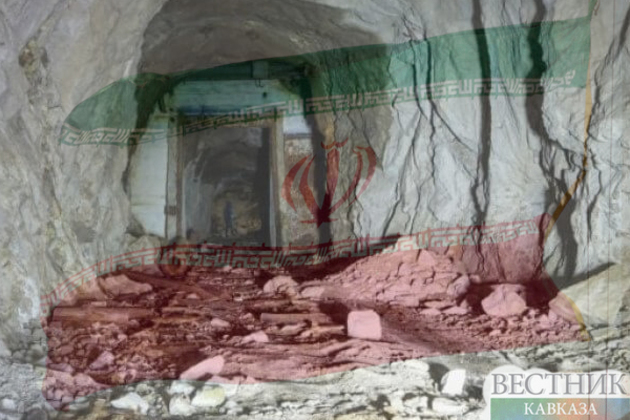Iran has started the exploitation phase for what is believed to be the biggest uranium mine in the central province of Yazd. The inauguration ceremony of the Narigan Mine, located around 35 km away from the city of Bafq, was held on February 5, in the presence of the head of the Atomic Energy Organisation of Iran (AEOI), Mohammad Eslami.
Expansion of nuclear power generation
Eslami described it as the "biggest uranium–molybdenum mine" in the country, and said that "creating the capacity with the aim of expanding nuclear power production and application of radiation are among the major goals pursued by the AEOI as part of the comprehensive strategic plan for the nuclear industry".
"Today was the first day of exploitation of the Narigan mine in Bafq, and the goal is to reach the main elements," he said, adding that the required technology would be constructed in the area. "The uranium extracted from this mine will be sent to Isfahan for purification and for making [nuclear] fuel," Fars quoted Eslami as saying. He added that “the results of the estimation of the exploratory reserves indicate the existence of 650 tons of uranium metal and 4,600 tons of molybdenum metal in the category of definitive and probable reserves”.
Nuclear facilities
In 2006, Iran announced that it had found uranium ore at three new sites in the Khoshoumi region, Charchouleh and Narigan in the centre of the country. Iran's main source of uranium is the Saghand mine, which has the capacity to produce 132,000 tonnes of ore per year. The country’s proven reserves are about 3,000 to 5,000 tons of uranium. Iran’s key nuclear facilities are Bushehr nuclear power plant, Fordow fuel enrichment plant, Natanz Enrichment Plant, Isfahan Nuclear Fuel Research and Production Center, Ardekan Nuclear Fuel Unit, Bonab Atomic Energy Research Center and Rudan Nuclear Research Center.
Iran and IAEA
On February 5, Iran's Foreign Ministry Spokesman Nasser Kanani rejected a statement by the United States, France, Germany and the UK on a reported substantial change at one of its key nuclear enrichment facilities. Kanani said that Iran had officially relayed details to the International Atomic Energy Agency (IAEA) on its enrichment at a 60% purity level inside the Fordo (Fordow) facility, and added that information on "all forms of enrichment" had been shared via a questionnaire submitted to the IAEA in November 2022.
He went on to say that during the latest IAEA inspection conducted in January, no enrichment activity at variance with Iran's declarations made in the November questionnaire had taken place. In its report on February 1, the IAEA criticised Tehran for an "undeclared change" to the interconnection between two clusters of advanced enrichment machines at Fordo. However, the Atomic Energy Organisation of Iran (AEOI) denied the report, saying an IAEA inspector had made an "error", and that the issue had already been resolved.
Grossi heads to Iran
The three European countries and the United States described the Iranian statement as "inadequate". The head of the IAEA, Rafael Grossi, is expected to travel to Tehran in February as the IAEA and Iran are in a deadlock over the nuclear watchdog’s investigation into the origin of uranium particles in Iran’s three undeclared sites.
In 2015, the UK, Germany, China, Russia, the US, France and Iran signed a nuclear deal - the Joint Comprehensive Plan of Action (JCPOA), which involved the lifting of sanctions in exchange for limiting Iran's nuclear program. In May 2018, the United States withdrew from the JCPOA, citing Tehran's violation of the agreements. Iran responded by enriching uranium above the permitted level. Since April 2021, negotiations have been underway to restore the JCPOA.






